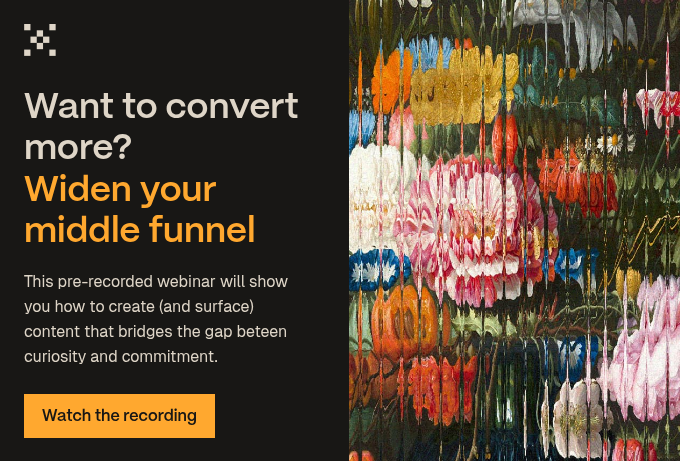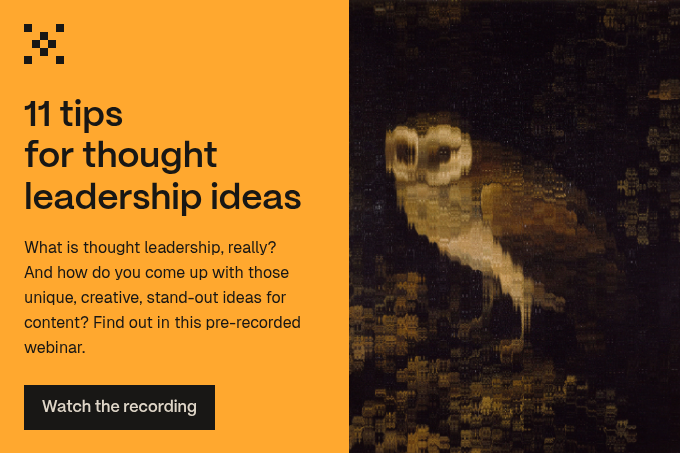Do you ‘have marketing content’, or do you actually have product literature?
We’d go so far as to say many people equate product literature with marketing content.
In fact:
Product literature is marketing and sales content specifically about your products and services.
However useful and important this type of marketing collateral is, it’s just one cog in the machine.
This article is based on one of our popular webinars. Watch the video and download the slides.
Who interacts with product literature?
Product literature caters to buyers who are at a later stage in their journey. They are near the bottom of the sales funnel, meaning they have identified the problems they are trying to solve, they have some answers in mind and they’re actively evaluating if your business offers the right kind of support. They’re ready for a sales conversation.
Problem is, the vast majority of people who come to your website are not ready to buy.
If you only have product literature on your website, then you’re catering to just this small segment of your potential buyers. Thought leadership content helps you widen the net, capturing people’s attention earlier in the process.
Once this broader audience trusts you as a provider of relevant, useful and timely information, then you’ll be perceived as credible. It is at THIS stage where great product literature shines.
What is product literature?
Take stock of your existing materials and check to see if you’re missing anything from this list:
Product pages
These live on the website. They’re a high-level view of the features and benefits of your products (or services), one for each product. Most importantly, they are presented in terms of the pain points and goals of your personas. This is not a technical specification.
One-pagers
One or two pages, often in PDF format, that describe, in depth, a product or service. You may have several of these, one for each product. These can be slightly more detailed (or simpler) versions of the product pages, and can be available to download on the site, sent directly by your sales team to prospects, or feature in your marketing lead nurturing.
Brochures
Again, a PDF, or even a physical brochure, about your business and what you offer. This is where you’d list out your products and services, a bit about the company and how you work, who you work with and so on.
Demo videos
Short videos that showcase your product’s capabilities. These can live on the website or be sent directly via email.
Non-product literature
By this, we mean content that looks like non-product literature, but is actually primarily an advertisement for your product. For example, an article about ‘How to choose the best IT services provider’ can be a list of all the things you do well. It’s talking about yourself and your products and services, but it’s framed as an answer to a question.
Customer evidence
Some customer evidence can be considered a type of product literature. For example, a case study is you talking about your products and services in the context of a particular client.
Proposals
These are presentation decks used during the sales cycle to persuade prospects to buy.
Is product literature thought leadership?
Put it this way. You are an expert on your own business. You can speak about your products and services with absolute authority, evidence and energy. In this sense, product literature is thought leadership content — deep knowledge about a topic that you share with prospects in order to persuade them to buy from you.
However, it’s at its most persuasive when it’s pitched to the right audience at the right time. That knowledge has to be interesting to your audience, not just yourself.
That means using simple, clear language that appeals to the reader. Avoid jargon the audience won’t be familiar with. Resist hype; you’re not going to bamboozle anyone into buying anything.
Rather, focus on benefits, using data and finding reasons to believe. Let your genuine passion and connection to your audience guide how you craft your product literature, and you won’t go wrong.







